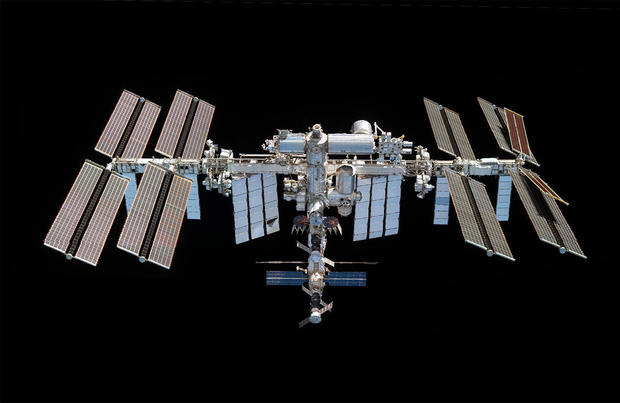NASA TV
SpaceX launched its twenty sixth house station resupply mission Saturday, sending up 7,700 kilos of apparatus and provides aboard a Dragon cargo ship, together with belated Thanksgiving Day treats for the lab’s crew, analysis gear and two new roll-out photo voltaic arrays to spice up the station’s energy.
Running late due to stormy climate earlier this week, the Falcon 9 rocket’s first-stage engines roared to life at 2:20 p.m. EST and the slender rocket shot away from pad 39A on the Kennedy Space Center. About 12 minutes later, the Cargo Dragon was launched to fly by itself.
If all goes effectively, the spacecraft will chase down the station early Sunday, approaching from behind and beneath. After looping up in entrance of the lab after which above it, the capsule will transfer in for an autonomous docking on the space-facing port of the ahead Harmony module.
“Of critical importance to us (are) the two new solar arrays that we’ll be doing spacewalks … to install and deploy on board the International Space Station,” stated Joel Montalbano, house station program supervisor on the Johnson Space Center in Houston.
“And in addition to the two solar arrays, we have some life support equipment being delivered, some GPS hardware, some exercise hardware and some medical equipment. … All in all, we’re looking for an exciting mission.”
Also on board: belated Thanksgiving treats for the station’s seven-member crew, together with spicy inexperienced beans, cranapple desserts and pumpkin pie.
“In addition, our standard food menu allows them to have everything that we’d be having on Thanksgiving, you know, mashed potatoes, candied yams, mac and cheese for those who want mac and cheese. So we’re going to get those guys fed very well.”
The Cargo Dragon is also loaded with analysis gear, together with an experiment to develop dwarf tomatoes in house, an experimental in-flight medical analysis package, an experiment to check novel methods for constructing giant buildings in microgravity and one other that may check new methods to supply key vitamins in house.
NASA TV
The ISS Roll-Out Solar Arrays, or IROSAs, are the third and fourth of six being put in on the house station in a $103 million improve to enhance the ability output of the lab’s eight older, original-equipment blankets.
The house station was constructed with 4 enormous rotating photo voltaic wings, two on the fitting aspect of the lab and two on the left. Each of these 4 wings is made up of two photo voltaic blankets extending from reverse sides of a central hub.
The first pair of original-equipment blankets have been in operation for greater than 20 years. Subsequent wings had been added in 2006, 2007 and 2009. All of them have suffered degradation from years within the house atmosphere and they don’t generate as a lot energy as they did once they had been new.
The IROSA blankets, about half the dimensions of the unique arrays, are extra environment friendly and can finally generate a further 120 kilowatts of energy. They had been designed to be mounted on brackets on the base of an present wing, extending outward at a 10-degree angle to attenuate the shade they solid on the array beneath.
NASA
The first two IROSA blankets had been put in on the left-side outboard arrays — the oldest set on the station — throughout spacewalks in 2021. The IROSAs carried up aboard the SpaceX Cargo Dragon Saturday can be put in on the left and right-side inboard wings throughout spacewalks in December.
“The first two arrays have been performing outstandingly well,” Matt Mickle, improvement tasks senior supervisor at Boeing, stated in a NASA launch. “The solar cells are immensely more powerful than previous generations.”
Once all six roll-out arrays are put in, general energy technology can be boosted 20 to 30 %, roughly matching the output of the unique arrays once they had been new.
The closing two of the six IROSAs at the moment underneath contract can be launched subsequent 12 months. It’s not but recognized whether or not NASA will purchase two closing IROSAs to enhance all eight of the station’s unique blankets.





